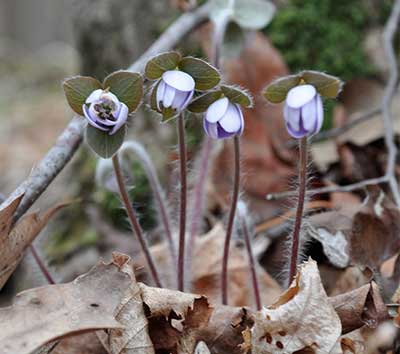Landscape Lenses
Ecological Landscape : Plant Communities
 A plant community is an assemblage of plant species found within a specific area. The physical boundary between one community and the next is not always clear, but ecologists try to look for natural groupings. For example, a meadow is a plant community consisting of grasses and other flowering plants. A relatively dry meadow in Vermont would be home to species such as daisies, milkweed, goldenrod and fescue. The exact combination of plants you find in any plant community such as a meadow will depend on which species were able to colonize the area and their interaction with the rest of the community.
A plant community is an assemblage of plant species found within a specific area. The physical boundary between one community and the next is not always clear, but ecologists try to look for natural groupings. For example, a meadow is a plant community consisting of grasses and other flowering plants. A relatively dry meadow in Vermont would be home to species such as daisies, milkweed, goldenrod and fescue. The exact combination of plants you find in any plant community such as a meadow will depend on which species were able to colonize the area and their interaction with the rest of the community.
Landscape analysts are interested in the distribution of plant communities for many reasons. Classifying and mapping plant communities tells us how plants are responding to their physical and biological environment, allows us to estimate the biodiversity of an area, and guides land-use planning, forestry and natural resource management. There are several methods used to map plant communities. Some are based on intensive inventories and fieldwork, while others interpolate data based on aerial infrared photography. Some methods provide finer scale mapping than others. Large-scale “land use” maps usually break the landscape into 7 - 15 general categories that include some plant community categories such as crop fields, hard wood forest, and deciduous forest and may help you gain an overview of land use patterns and plant communities in your area.
The dynamics within plant communities are fascinating. However, the spatial distribution and species interactions within a plant community are usually strongly affected by the surrounding environment. Plants respond to soil structure and chemistry, hydrology, and climate. Plants create their own environment as well. Roots change the soil structure and chemistry, and contribute to the weathering process that creates more soil over time. Leaves and large branches create shade and retain moisture in an area and thus create cooler, damper and darker micro-climate that may or may not be favorable for the growth of other species.
Competition between plants and between plants and animals (mainly insects in Vermont) is a major factor that shapes how and where plants are able to thrive. Some plants, such as cinnamon fern have restricted growing conditions and grow under very specific environmental conditions, while others, such as red maple, can tolerate and compete under a wide range of conditions. Some plants compete so successfully that they are known as invasive species. Many of these species are not native to the area but were brought here over the last four hundred years. Most came in the form of seeds attached to livestock, mixed into hay or carried in manure. Some, such as common yard grass species are so well established that the original plant community no longer exists. But others like bittersweet, honeysuckle and purple loosestrife continue to expand their territories and threaten to out compete native forest and field plant species. There are several statewide programs that aim to control the growth of exotic invasive plant species.